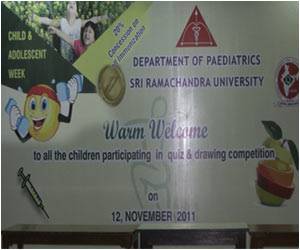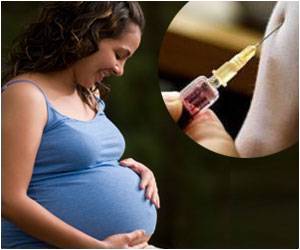Means to retain the potency of vaccines and drugs, that usually need refrigeration for long periods, at high temperatures by stabilizing them in a silk protein made from silkworm cocoons, found.

The research will be published before print in the Proceedings of the National Academy of Sciences (PNAS) Online Early Edition the week of July 9, 2012.
Tufts biomedical engineers led by David L. Kaplan, Ph.D., found that silk-stabilization preserved the efficacy of the measles, mumps and rubella (MMR) vaccine, as well as penicillin and tetracycline, at a wide range of temperatures (at least up to 60 degrees C or 140 F) significantly better than other options such as collagen encapsulants, dried powders and solutions.
"Silk protein has a unique structure and chemistry that makes it strong, resistant to moisture, stable at extreme temperatures, and biocompatible, all of which make it very useful for stabilizing antibiotics, vaccines and other drugs. The fact that we can also make silk into microneedles to deliver a vaccine is an enormous added advantage that can potentially provide a lot of useful solutions to stabilization, distribution and delivery," says Kaplan, who has been studying silk for two decades.
Nanoscale Bubble Wrap
Protein function depends on chains of amino acids folding into specific shapes. At higher temperatures or in the presence of water, the chains tend to unfold, then clump together, which renders them inactive. Silk fibroin is composed of interlocked crystalline sheets with numerous tiny hydrophobic pockets. The pockets trap and immobilize bioactive biomolecules -- keeping them from unfolding -- and also protect them from moisture. The end result is like enveloping a fragile material in a nanoscale Bubble Wrap.
Advertisement
Measles is one of the leading killers of children worldwide. Without refrigeration, the MMR vaccine rapidly loses potency. But after six months of storage in freeze-dried silk films at body temperature (37 C) and at 113 F (45 C), all components of the vaccine retained approximately 85 percent of their initial potency.
Advertisement
Silk stabilization also protected the tetracycline against degradation by light, a benefit that the researchers did not anticipate, according to co-author and research assistant professor Bruce Panilaitis. Panilaitis earned his Ph.D. in biology at Tufts Graduate School of Arts and Sciences before joining Kaplan's lab in 2001 as a postdoctoral fellow.
So far, Panilaitis adds, the researchers haven't found any pharmaceutical that they have been unable to stabilize. This could be a "universal storage and handling system."
Additional authors on the paper include Eleanor Pritchard, who earned her doctorate in biomedical engineering at Tufts and is now a postdoctoral fellow at St. Jude Children's Research Hospital in Memphis; Xiao Hu, a biomedical engineering postdoctoral fellow who will join Rowan University as an assistant professor in September; Thomas Valentin, a biomedical engineering master's degree student; and Fiorenzo Omenetto, Ph.D., professor of biomedical engineering.
Source-Eurekalert










